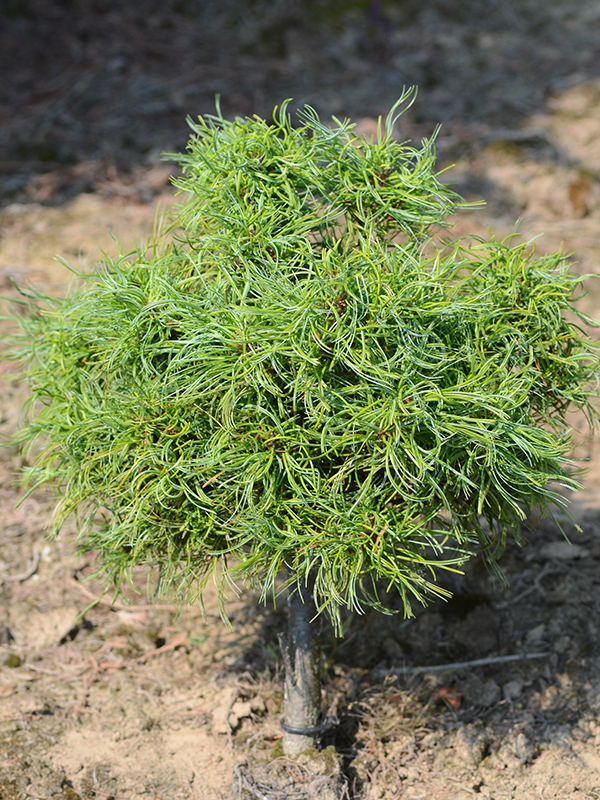| General Description | P. strobus ‘Contorta’ is a large, upright, loosely pyramidal structured Pine with distinctive, slightly twisted branches, trunk and needles. This cultivar usually will grow approximately 4 m in the first 10 years and can reach up to 10 m at full maturity. |
| ID Characteristic | This tree has green-blue twisted needles which persist year-round. |
| Shape | Upright, loose, pyramidal. |
| Landscape | This specimen is typically used for screening, woodland, accent or a specimen tree. |
| Propagation | Propagated by semi-hardwood cuttings or by grafting. |
| Cultivation | Should be grown in well-drained soil in full sun, it is very adaptable and can survive in dry or moist soil conditions. It prefers acidic soils. This cultivar is tolerant to drought once established. It is intolerant of salt and air pollution, and should avoid being planted in the inner city or urban street-side. To reduce wind burn this tree should be planted in a sheltered location. |
| Pests | The specimen is susceptible to blights and rusts like most pines, but the most problematic disease is white pine blister rust which is usually fatal. It is also susceptible to white pine weevil, bark beetles, white pine shoot borer, pine sawfly, scale and aphids, spider mites, and honey fungus. |
| Habitat | Horticultural origin. |
| Bark/Stem Description | Brownish-grey in colour and will develop furrows as it matures. |
| Leaf Description | Has 5 needles per fascicle a soft greenish-blue in colour. Needles are flexible, twisted or curved, densely set and grow up to 15 cm long. |
| Fruit Description | Cones are symmetrical, cylindrical, tapered, sometimes curved and 3-8 inches in length. Young female cones start as a green colour, but change to a light brown as they mature. |
| Colour Description | Needles are greenish-blue, the bark is brownish-grey in colour and young cones are green turning brown at maturity. |
| Texture Description | Has a fine overall texture. |
